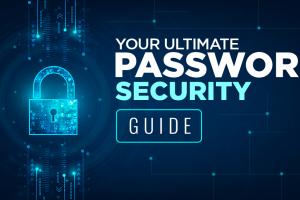Mastering Password Security: The Ultimate Guide to Creating Strong Passwords

-
Quick Links:
- Introduction
- Why Passwords Matter
- Characteristics of Secure Passwords
- How to Create a Secure Password
- Tools for Password Management
- Common Password Mistakes
- Real-World Case Studies
- Expert Insights on Password Security
- Best Practices for Password Security
- FAQs
Introduction
In today's digital age, the importance of having a secure password cannot be overstated. With increasing cyber threats and data breaches, understanding how to create a strong password is essential for safeguarding your personal information and online accounts. This comprehensive guide will provide you with all the tools and knowledge you need to master password security.
Why Passwords Matter
Passwords are the first line of defense against unauthorized access to your accounts. A weak password can lead to identity theft, financial loss, and significant personal distress. According to a report by Verizon, 81% of data breaches are caused by stolen or weak passwords. This alarming statistic underscores the need for robust password practices.
Characteristics of Secure Passwords
A secure password should have the following characteristics:
- At least 12 to 16 characters in length
- Includes a mix of uppercase and lowercase letters
- Contains numbers and special characters
- Is not based on easily obtainable personal information (like birthdays or names)
- Is unique for each account
How to Create a Secure Password
Creating a secure password can be a straightforward process if you follow these steps:
Step 1: Use a Password Manager
Consider using a password manager to generate and store complex passwords. Tools like LastPass or 1Password can help you create strong passwords without the need to remember every single one.
Step 2: Create a Passphrase
One effective method for creating a secure password is using a passphrase—a series of random words strung together. For instance, “CoffeeTable$Sunshine7!” is both memorable and secure.
Step 3: Add Complexity
Incorporate numbers, symbols, and upper/lowercase letters. For example, instead of using “password123”, try “P@ssW0rd#2023!” to enhance security.
Step 4: Avoid Common Patterns
Steer clear of common patterns like “123456” or “qwerty”. Cybercriminals often use these patterns in their attacks.
Step 5: Regularly Update Passwords
Change your passwords periodically, especially for sensitive accounts. Set reminders to update them every three to six months.
Tools for Password Management
Here are some popular tools that can help you manage your passwords securely:
Common Password Mistakes
To enhance your password security, avoid these common mistakes:
- Using the same password across multiple sites
- Including easily guessable information
- Writing passwords down in easily accessible places
- Neglecting two-factor authentication
Real-World Case Studies
Examining real-world data breaches can provide valuable lessons on the importance of strong passwords:
Yahoo Data Breach
In 2013, Yahoo suffered a massive data breach affecting over 3 billion accounts, attributed to weak password practices. This incident emphasizes the need for users to create complex, unique passwords for their accounts.
Target Data Breach
In 2013, Target’s data breach was partially due to stolen credentials from third-party vendors. This highlights the importance of not only strong passwords but also secure password practices across all affiliated accounts.
Expert Insights on Password Security
Experts in cybersecurity emphasize that a proactive approach to password security is vital. According to CSO Online, “Using a password manager is one of the best ways to ensure your passwords are both strong and unique.”
Best Practices for Password Security
To maintain optimal password security, consider these best practices:
- Enable two-factor authentication wherever possible
- Regularly review account security settings
- Be cautious of phishing attempts
- Educate yourself on the latest security threats
FAQs
1. How often should I change my passwords?
It's advisable to change your passwords every 3 to 6 months, especially for sensitive accounts.
2. What is the best length for a secure password?
A password should ideally be at least 12 to 16 characters long.
3. Can I use a password manager if I have many accounts?
Yes, a password manager is designed to handle multiple accounts and can generate strong passwords for each.
4. What should I do if I suspect my password has been compromised?
Change your password immediately and enable two-factor authentication for added security.
5. Are phrases better than single words for passwords?
Yes, passphrases are often more secure than single words as they are longer and can be easier to remember.
6. Is it safe to write down passwords?
It's generally not recommended, but if you must write them down, ensure they're stored securely.
7. What is two-factor authentication?
Two-factor authentication adds an extra layer of security by requiring a second form of verification beyond just a password.
8. Can I use my email password for other accounts?
No, it's crucial to use unique passwords for different accounts to prevent a domino effect in case of a breach.
9. What are common password patterns to avoid?
Avoid patterns like “123456”, “qwerty”, or easily guessable information like birthdays.
10. How can I remember complex passwords?
Use a password manager to store your passwords securely or create a memorable passphrase that combines random words.
Random Reads
- How to repair mercury thermometer
- How to repair scratches on leather furniture
- How to replace defective electrical switch outlet
- The easiest way to clean your room
- Unfreeze ipad
- Understanding uno reverse card
- Unforget bluetooth device iphone
- How to make a game on roblox
- How to unshare excel workbook
- How to unsend text message